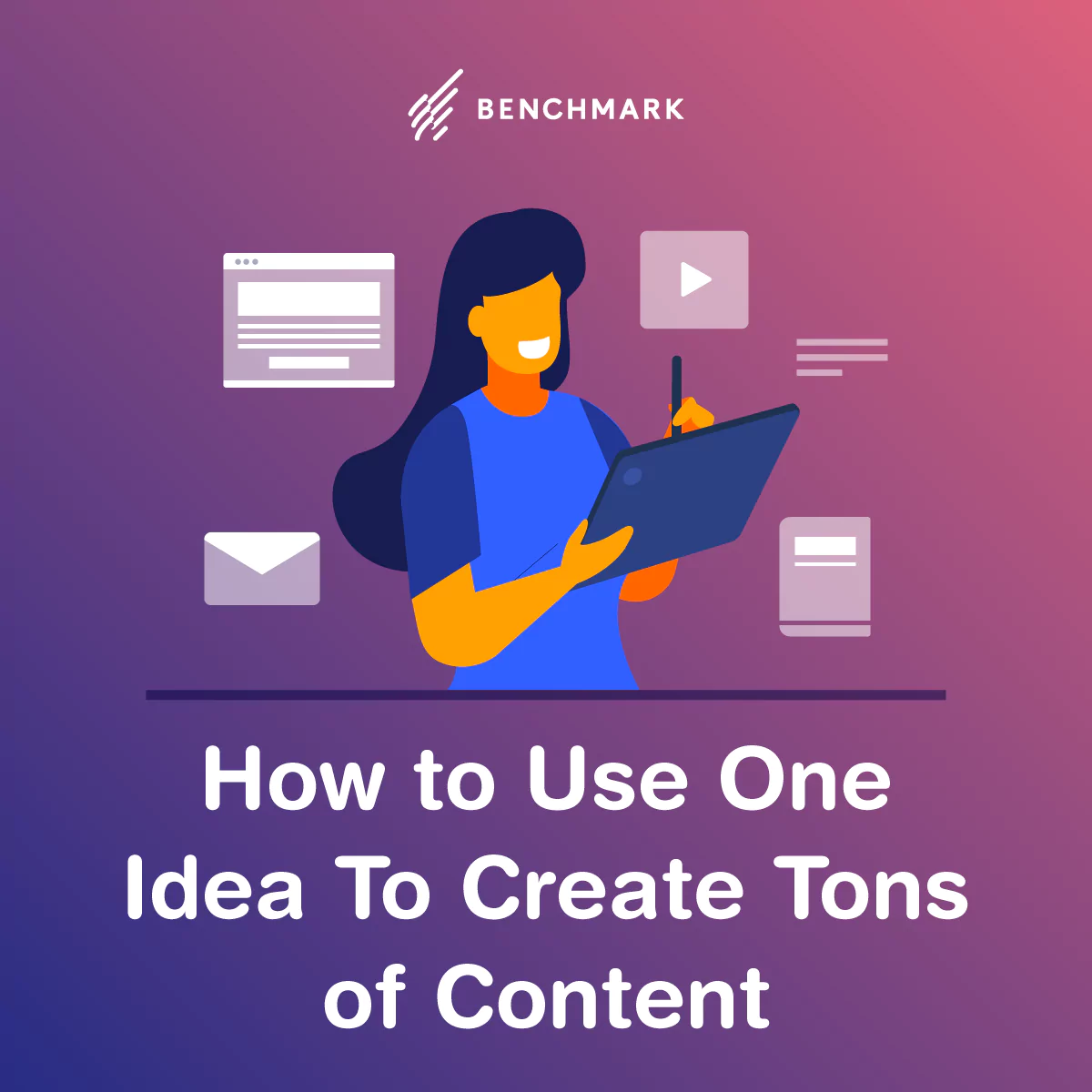
Writer’s block happens to the best of us. And if you’ve created content for a while, I’m sure ‘you’ve come across it once or twice. It’s a simple fact of life (and content marketing) that the well of creativity can go dry from time to time. While it comes with the territory, it’s always helpful to have a plan for pulling yourself out of it.
One way to beat the writer’s block blues? Come up with one topic idea and see how many different pieces of content you can spin it into. Not only does this help overcome the hurdles of idea generation, but it creates a series of content pieces that can be utilized in a variety of ways. Here’s how to do it.

Step One: Choose Your Topic
The process stems from one content idea, so you’ll need to do this first before you can plan out your strategy. It can be a new topic or one that you’ve already touched on before. If it already exists (say, as a post on your blog), make sure it’s proven to perform well and resonate with your audience. This gives you a head start on ensuring people will be interested in multiple pieces of content on it. If it doesn’t exist, consider creating one related to a special promotion you’re doing, or a specific product or service you want to highlight.
Step Two: Brainstorm Content Ideas
You’ve got your topic idea, so now you’ll want to map out all of the pieces of content that you can create from it. Examples include:
- Blog posts
- Guest posts
- Infographics
- Images and videos
- Webinars
- Ebooks
- Emails
- Social media
- Pillar pages
The key here is to focus on the same idea while making each piece of content relevant and warranted. Let’s illustrate with an example. If the topic idea that you’re working off of is “optimizing content,” you could build it out into a wide variety of formats, including:
Blog posts
- “10 Ways to Optimize Your Content”
- “The 8 Essentials of Optimized Content”
- “Is Your Content Optimized? Here’s How to Tell”
Guest posts
Write a guest article that elaborates on one section within one of your blog posts. For example, you could take the “The 8 Essentials of Optimized Content” and review the main points listed. If one touches on headings and subheads, you could create a guest article that dives into the essential tips for putting together the best headings and subheadings.
Infographics
Make a shareable infographic that illustrates the step-by-step process for optimizing content.
Videos
Do an explainer video on how you use SEO for content optimization and post it to your company’s YouTube channel
Webinars
Create a webinar on the topic of content optimization and why it’s so important. Use your created resources to link to at the end to drive more traffic to them.
Ebooks
Write an original, longer-form version of your blog post that can be downloaded as an ebook, with plenty of examples and additional content. Then make it a gated asset to help grow your contact list.
Emails
Set up a drip campaign covering all of the things that need to be done to optimize content. Or, send out targeted emails on the value of optimization, with links to the various pieces of content you’re creating on the topic.
Social media
Share all of the content you’re creating on social, and get your followers engaged by asking them to share their best tips for writing optimized copy. You could also create a visual checklist for content optimization and share it on your channels, linking it to one of the pieces of content you created.
Pillar pages
Boost your site’s SEO by creating a pillar page dedicated to everything regarding content optimization. Include links to your blog posts, videos, and other content you’ve created on the topic.
Step Three: Create and Disseminate
Now you’ll want to start tackling your content to-do list. Set up a schedule of deadlines and release dates for each piece of content so that you’re not just sending out a barrage all at once. That can muddy the waters and makes it difficult to get the full utility out of each piece.
There will be lots of cross-connection here. For example, all the content you’re creating should be shared on your social pages, as well as in emails. Some content might require landing pages, while others will need pop-ups to drive eyes in their direction. There are many moving pieces, but that’s a good problem to have — especially when you only had to come up with one idea to rev up your whole plan.
All of a sudden, you’ve gone from having no ideas to having a wealth of them, with a well-diversified content strategy that hits on a ton of different formats to maximize your reach. Even if you’re bursting at the seams with content ideas, this method will help you get the most juice out of every idea that you come up with. It’s also a great way to get more benefits out of topic ideas that have already proven to catch the interest of your leads. So what are you waiting for?






